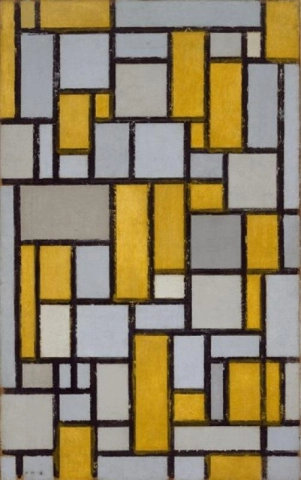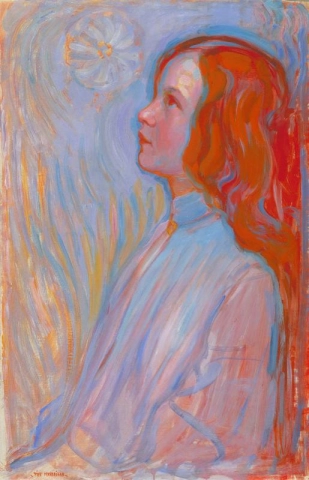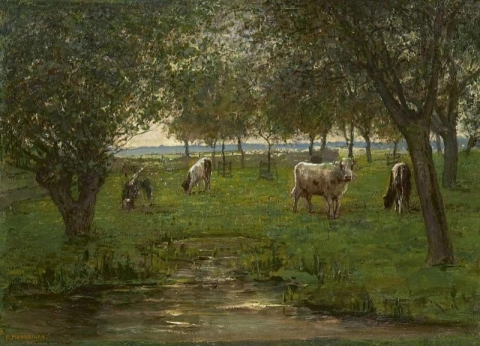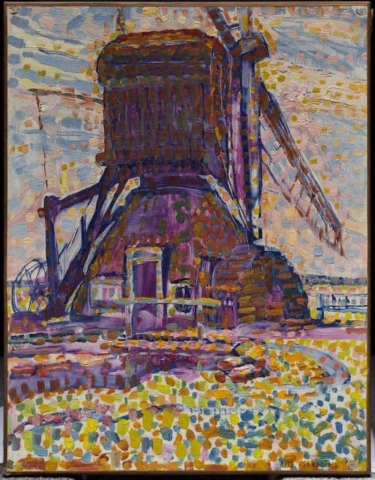

Hand painted reproductions of Piet Mondrian
Piet Mondrian: Pioneer of Abstract Art and the De Stijl Movement
Piet Mondrian (1872–1944) was a Dutch painter renowned for his pivotal role in the development of abstract art and as a leading figure in the De Stijl movement. His revolutionary approach to painting, characterized by geometric forms, straight lines, and a primary color palette, set the foundation for modern abstraction. Mondrian’s work transcended representation, offering a visual language based on pure abstraction, order, and harmony. His influence can still be seen in contemporary design, architecture, and art, making him a cornerstone of 20th-century art history.
Early Life and Education
Piet Mondrian was born on March 7, 1872, in Amersfoort, Netherlands, into a religious family. His early exposure to art came from his father, a teacher, and his uncle, who was a painter. Mondrian’s early works were grounded in naturalism, influenced by the academic traditions of the time. He began his formal art education at the age of 14, enrolling in the Academy of Fine Arts in Amsterdam, where he studied under established academic instructors. His early works, often landscapes and still lifes, demonstrate the strong influence of the Impressionist and Post-Impressionist movements.
As Mondrian matured as an artist, he sought to explore the spiritual and symbolic dimensions of art. His travels through Europe exposed him to a variety of artistic movements, including the Symbolist and Cubist styles, which had a profound impact on his work. The work of artists like Georges Braque and Pablo Picasso led Mondrian to question the traditional approach to representation and ultimately steered him toward abstraction.
Artistic Development and Style
Mondrian’s artistic journey was marked by a gradual move away from representational art towards an abstract form that he believed could convey universal truths. His early style was heavily influenced by Impressionism, but as he developed, he moved toward a more minimalist approach, experimenting with form, color, and composition. His work was particularly shaped by his exposure to the radical movements of the early 20th century, including Cubism and the spiritual philosophy of Theosophy.
By the 1910s, Mondrian had embraced abstraction fully. He began developing a new visual language characterized by geometric shapes—particularly squares and rectangles—arranged within a grid structure. He employed straight lines and used only primary colors (red, blue, yellow), along with black, white, and gray, to create harmony and balance within his compositions. Mondrian’s approach was not just about form, but also about achieving a universal sense of order and tranquility through the balance of these elements.
Mondrian's iconic style evolved into what became known as neoplasticism or De Stijl, a movement that sought to express harmony and order through geometric abstraction. His works, like Composition with Red, Blue, and Yellow (1930) and Broadway Boogie Woogie (1942-43), exemplify his dedication to this ideal, showing how color and form could transcend individual perception to reveal universal truths.
Themes and Significance
The central theme of Mondrian’s work was the search for universal harmony through abstraction. He believed that by stripping art of unnecessary detail and focusing on pure geometric form and color, he could express a deeper, spiritual connection to the universe. Mondrian’s art was driven by the idea that the visual world could be reduced to fundamental elements—horizontal and vertical lines, and primary colors—and that these elements could be combined in such a way that they conveyed balance, stability, and unity.
Mondrian’s shift to abstract art was also informed by his interest in theosophy, a spiritual philosophy that emphasized the importance of the underlying unity of all things. He believed that his abstract compositions were a way to represent the spiritual order of the universe. His grid-based paintings, with their careful organization of shapes and colors, were not only aesthetically compelling but also reflective of his quest for universal equilibrium.
In addition to his work within the De Stijl movement, Mondrian’s later pieces also reflected his fascination with urban life. His painting Broadway Boogie Woogie is an excellent example of this, capturing the rhythm and energy of New York City, with its dynamic, repetitive pattern of blocks and lines reflecting the bustling energy of the city’s streets and the rhythm of the boogie-woogie jazz music that inspired him.
Achievements and Influence
Piet Mondrian’s work had a profound impact on the development of modern art. His abstract style became a foundation for later movements, particularly Minimalism and Abstract Expressionism. His clear, geometric approach and emphasis on color theory influenced a wide range of disciplines, including architecture, interior design, and graphic design.
Mondrian’s role in the De Stijl movement, alongside other prominent artists like Theo van Doesburg, was instrumental in shaping the direction of modern art. The movement emphasized pure abstraction, with artists seeking to express universal principles through geometric forms. Mondrian’s influence extended far beyond painting, and his ideas found expression in architecture (notably the works of architect Gerrit Rietveld) and design.
Though he was not widely known during his lifetime, Mondrian’s work began to gain significant recognition after his death. His reputation as one of the pioneers of abstract art solidified throughout the 20th century, and his work remains highly regarded today. Mondrian’s influence can be seen in the work of many contemporary artists, designers, and architects, as well as in the development of modern art institutions.
Legacy
Piet Mondrian’s legacy as one of the most important figures in the history of abstract art endures. His commitment to abstraction, his search for harmony through geometric forms, and his focus on color and balance continue to inspire artists and designers worldwide. His minimalist compositions have become iconic symbols of modernism, and his work is widely celebrated for its clarity, precision, and spiritual depth.
Today, Mondrian’s paintings are housed in major museums and galleries, including the Tate Modern in London and the Museum of Modern Art (MoMA) in New York. His works are not only appreciated for their artistic merit but also for the way they encapsulate the philosophical and cultural ideals of the early 20th century.
Where to Find Reproductions of Piet Mondrian’s Art
For art enthusiasts and collectors looking to bring the purity and elegance of Mondrian’s abstract compositions into their own homes, high-quality oil painting reproductions of his work are available. These reproductions allow collectors to experience the powerful simplicity and harmony of Mondrian’s iconic geometric style in their own space, capturing the essence of his artistic vision.
Imagine owning an original work of art by Piet Mondrian, one of the greatest artists in history. At POD we offer you the opportunity to make this dream come true. We reproduce Piet Mondrian's works down to the smallest detail, so you can enjoy them in your own home.
Our reproductions are made by experienced artists who use the best materials and techniques. We are dedicated to providing you with the highest quality works of art, which will bring joy and inspiration to your family for generations.





















































